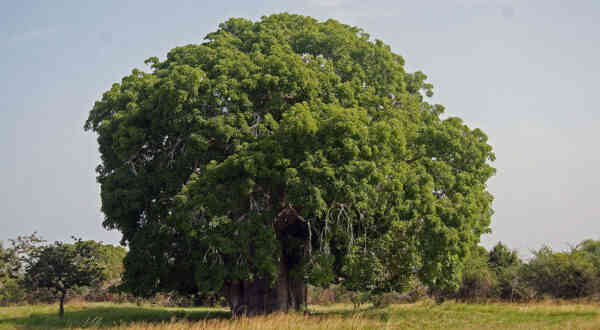The impressive baobab trees can surprise even the worldly-wise botanist. Where else could such an amazing creation of nature grow, if not in Africa, famous for its outlandish flora and fauna? These mighty trees live for a very long time, and they have adapted to survive even in desert conditions. It is really very interesting to admire them.
Interesting facts about baobabs
- Like most other deciduous trees, they shed their leaves for the winter. True, not because of the cold, but because of the heat and dryness.
- In winter, that is, the driest time, baobabs “lose weight” – they decrease in volume, as they begin to use up the moisture stored in the trunk.
- Old baobabs are usually hollow inside. One of them even has a hotel room.
- In the African country of Zimbabwe, there is a small train station built inside a giant old baobab tree.
- Large baobab flowers reach 20 centimeters in diameter, but their life span is very short – only one night, after which they wither and fall off.
- Baobab wood is porous, which helps it store a lot of water. And thanks to this, baobabs are not cut down, since it is difficult to build something durable from such material.
- Baobabs have fruits. Outwardly, they resemble hairy cucumbers or melons. By the way, they are quite edible, and monkeys willingly eat them. These fruits taste like fresh ginger.
- In Madagascar, the baobab is considered a national symbol (interesting facts about Madagascar).
- In circumference, the trunks of the oldest and largest baobabs known to us reach 50 meters.
- Baobabs are not pollinated by bees, but by bats that feed on nectar.
- The bark torn from this tree grows back very quickly.
- A cut down baobab may well take root again and continue to exist in this form.
- It is not known for certain how long baobabs live. At least a thousand years, but some scholars give a period of 4,000 years or more.
- Some African tribes roast baobab fruits and then brew what they have, resulting in a drink that is vaguely similar to coffee.
- From the ashes of baobab wood, African healers make remedies for colds and other diseases, and the bark is used to make fishing nets and ropes.
- Informally, the baobab is sometimes called the lemonade tree, because its fruits, dried, crushed and dissolved in water, make it possible to prepare a drink that resembles lemonade.
- Baobab is depicted on the coats of arms of two countries – the Central African Republic (CAR) and Senegal.
- Young leaves of baobabs are edible. Some Africans use them as one of the salad ingredients.
- This is one of the few trees that do not have growth rings. That is why it is difficult to determine the age of the baobab.
- Most often, the baobab is only three times larger than it is wide, but there are exceptions.
